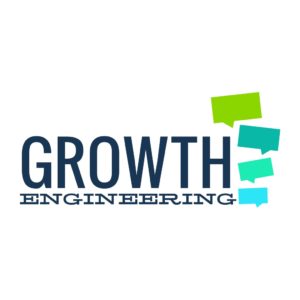How To Use Your Learning Management System For Measuring Employee Engagement
It’s a shame to invest a lot of time and effort into an online learning platform if nobody wants to use it. Even with a comprehensive training program that covers everything your people need to know, the initiative won’t have any effect unless it engages the learner. Employee engagement isn’t just the driving force behind effective training – it’s the lifeblood of the entire organization. It’s no coincidence that companies with engaged employees are 22% more profitable than those without1. No business leader would pass up the opportunity for boosting profit, but as the old saying goes, “You can’t manage what you don’t measure”. With that in mind, how can you tell if your employees are engaged? Luckily, measuring employee engagement with your Learning Management System is an easy task; and the more features your Learning Management System has, the more metrics you can collect.
The Metrics That Matter
Basic LMS Reporting
When Learning and Development managers search for a new learning platform, LMS reporting is often one of the most desired features. At the very least, this should show the administrator which learning initiatives are having a real impact. But there’s more data hidden behind some seemingly mundane metrics.
- Response Rate.
How long does it take the learners to complete a learning unit once it has been published? If most people finish the task promptly, it tells you that the learners are receiving the right notifications and that they’re engaged enough to jump straight in as soon as new content is available. - Weekly Logins.
Make a habit of checking your weekly login rates. Are there specific areas of the business that are more engaged than others? Find out what’s working so well in these areas and try to replicate it in the rest of the business. - Classroom Attendance.
Even though online learning has become the norm for training delivery, around 68% of businesses still include an element of classroom training2. Since a blended learning approach is vital for maintaining consistency, many Learning Management Systems let admins coordinate their classroom training. Attendance rates can be good indicators of overall engagement.
Bonus tip – Install Web Analytics3: If you’re not getting enough data through your LMS reporting suite, installing a tracking code for web analytics gives you visibility over several other useful metrics. These range from the learner’s location, their browser or their device and it can even tell you how long the average session is.
Gamification Features
In the past decade, developers have added game mechanics to non-game applications to improve user engagement. These game mechanics range from explicit badges, achievements, and trophies all the way to subtler features like progress bars. Because gamification works so well, learning platform developers have also adopted this strategy. Aside from encouraging repeat visits and content completion, the addition of gamification creates more opportunities for measuring employee engagement.
- Achievements.
Achievements are triggered by various user actions within the system. For example, a learner might receive an achievement for logging on during a set time period, or for their hundredth login. The more users with these achievements in their badge cabinet, the more engaged they are. - Leaderboards.
The leaderboard is usually a prominent UI feature which displays a ranking of the learners based on how many badges or points they have earned. If you consistently see the same faces at the top of the leaderboard, it could be time to start a new campaign to engage those less active on the Learning Management System. - Level Completion.
With a fully gamified Learning Management System, it’s possible to arrange the learning content into a series of levels. By running a report on level completion, you can judge how quickly the employees are moving through their training. This also gives you the chance to identify any speed bumps that might be turning people away.
Social Features
Sparking a conversation amongst your employees is arguably one of the most effective ways for generating engagement. It’s also an essential part of capturing the intellectual capital that exists within your people. Once you’ve added a social element to your training program, you can also take advantage of a host of additional engagement metrics.
- News Feed Activity.
Having a news feed on your learning platform lets you watch the beating heart of your organisational culture in real time. A thriving culture of engaged employees results in a fluid and active news feed. On the other hand, if the latest post doesn’t change for weeks, however much you keep refreshing the page, it’s an indication that you need to do something to make the experience more engaging. - Knowledge Sharing.
Although active conversation is a positive thing on a learning platform, the real value of social features comes in knowledge sharing. Around 90% of workplace learning is comprised of informal learning4 - those tips and titbits that your learners share amongst themselves. The more engaged your learners are with their training, the more likely they are to share their own knowledge. - Asking Questions.
Engaged employees like to share their knowledge with their colleagues, but that’s only half the story. Learners with less experience are likely to have questions of their own. If you have an FAQ section or an area for Subject Matter Experts, you can capture these questions and (more importantly) the answers. If your employees are truly engaged with their jobs, they’ll likely ask a greater number of questions. Aside from giving you an indication of their engagement-level, it might even show you areas of the training program that might need more attention.
Final Word
Measuring employee engagement is the first step towards improving it. With more data at your fingertips, you can identify where the real issues lie and create a better, more engaging online learning experience.
References:
- How Employee Engagement Drives Growth
- Learning Management System User Report – 2016
- 8 Types Of eLearning Analytics To Obtain From Google And Your LMS
- 70:20:10 training model is 'most effective for learners', research finds








